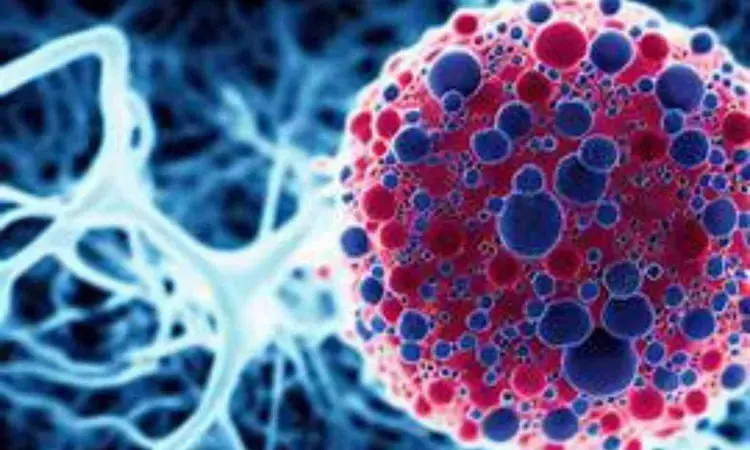- Home
- Medical news & Guidelines
- Anesthesiology
- Cardiology and CTVS
- Critical Care
- Dentistry
- Dermatology
- Diabetes and Endocrinology
- ENT
- Gastroenterology
- Medicine
- Nephrology
- Neurology
- Obstretics-Gynaecology
- Oncology
- Ophthalmology
- Orthopaedics
- Pediatrics-Neonatology
- Psychiatry
- Pulmonology
- Radiology
- Surgery
- Urology
- Laboratory Medicine
- Diet
- Nursing
- Paramedical
- Physiotherapy
- Health news
- Fact Check
- Bone Health Fact Check
- Brain Health Fact Check
- Cancer Related Fact Check
- Child Care Fact Check
- Dental and oral health fact check
- Diabetes and metabolic health fact check
- Diet and Nutrition Fact Check
- Eye and ENT Care Fact Check
- Fitness fact check
- Gut health fact check
- Heart health fact check
- Kidney health fact check
- Medical education fact check
- Men's health fact check
- Respiratory fact check
- Skin and hair care fact check
- Vaccine and Immunization fact check
- Women's health fact check
- AYUSH
- State News
- Andaman and Nicobar Islands
- Andhra Pradesh
- Arunachal Pradesh
- Assam
- Bihar
- Chandigarh
- Chattisgarh
- Dadra and Nagar Haveli
- Daman and Diu
- Delhi
- Goa
- Gujarat
- Haryana
- Himachal Pradesh
- Jammu & Kashmir
- Jharkhand
- Karnataka
- Kerala
- Ladakh
- Lakshadweep
- Madhya Pradesh
- Maharashtra
- Manipur
- Meghalaya
- Mizoram
- Nagaland
- Odisha
- Puducherry
- Punjab
- Rajasthan
- Sikkim
- Tamil Nadu
- Telangana
- Tripura
- Uttar Pradesh
- Uttrakhand
- West Bengal
- Medical Education
- Industry
Significant Cancer Disparities Among Men in 2022 Expected to Widen by 2050; Strengthening Health Infrastructure and Equity Urged

Australia: A study published in Cancer: The Journal of the American Cancer Society, revealed significant disparities in cancer incidence and mortality among men in 2022, with these gaps expected to increase by 2050. To address these disparities and achieve global cancer equity for men, it is essential to bolster health infrastructure, improve workforce quality and accessibility, encourage both national and international collaborations, and advance universal health coverage.
Men have a higher prevalence of modifiable risk factors like smoking and alcohol consumption, which contribute to increased cancer rates and lower survival outcomes. However, comprehensive data on the global cancer burden in men, particularly disparities across age groups and countries, remains limited.
To address this gap Habtamu Mellie Bizuayehu, School of Public Health, Faculty of Medicine, The University of Queensland et. a analyzed 30 cancer types in men for 2022, with projections extending to 2050.
In this study, the 2022 GLOBOCAN estimates were utilized to present cancer statistics for men across 185 countries and territories globally. Mortality-to-incidence ratios (MIRs) were determined by dividing age-standardized mortality rates by the corresponding incidence rates.
The key findings of the study are as follows:
- In 2022, older men (aged 65 and above) exhibited a high mortality-to-incidence ratio (MIR), indicating poor survival, with 61% affected.
- Rare cancers like pancreatic cancer showed a particularly high MIR at 91%.
- Countries with a low Human Development Index (HDI) had a high MIR of 74%.
- By 2050, cancer cases among men are projected to rise from 10.3 million to 19 million, an increase of 84%.
- Cancer-related deaths are expected to rise from 5.4 million to 10.5 million, an increase of 93%.
- Men aged 65 and older are projected to see a more than two-fold increase in cancer deaths, with a 117% rise.
- Low-HDI and medium-HDI countries/territories are expected to see a 160% increase in cancer cases and deaths.
- Cancer cases and deaths among working-age groups are projected to rise by 39%, while in very-high-HDI countries/territories, the increase is projected at 50%.
The researchers concluded that disparities in cancer incidence and mortality among men, evident across age groups, countries/territories, and Human Development Index (HDI) levels in 2022, are expected to widen by 2050. Poorer survival rates, indicated by a higher mortality-to-incidence ratio (MIR), were observed among older adults, for rare cancers like pancreatic cancer, and in low-HDI and medium-HDI countries. By 2050, cancer cases and deaths are projected to more than double in low-HDI countries/territories and among older adults.
The researchers emphasized that enhancing the quality and accessibility of health infrastructure, promoting universal health coverage with a human rights approach, addressing modifiable cancer risk factors, funding research into male-specific cancer screening programs, and fostering collaborative and multidisciplinary efforts between national and international stakeholders are crucial to improving equity in cancer outcomes. These efforts are vital to reducing disparities in cancer burden and ensuring equitable cancer prevention and care for men worldwide.
References
Bizuayehu, H. M., Dadi, A. F., Ahmed, K. Y., Tegegne, T. K., Hassen, T. A., Kibret, G. D., Ketema, D. B., Bore, M. G., Thapa, S., Odo, D. B., Kassa, Z. Y., Shifti, D. M., Amsalu, E., Sarich, P., Venchiarutti, R. L., Melaku, Y. A., Kibret, K. T., Habte, A., Mefsin, Y. M., . . . Belachew, S. A. Burden of 30 cancers among men: Global statistics in 2022 and projections for 2050 using population-based estimates. Cancer. https://doi.org/10.1002/cncr.35458
Nidhi Srivastava is a dietician. She holds a post-graduate degree in Nutrition and Dietetics from MRIIRS. With a profound passion for utilizing nutrition and lifestyle modifications to manage diseases, she is dedicated to advancing the field through rigorous research and fact-checking. Her expertise lies in evidence-based practice, ensuring the highest standards of dietary health and wellness.


